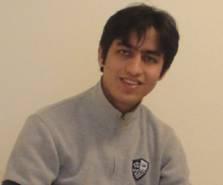

A moderate Islam in Afghanistan vs. A fundamentalist Islam in Pakistan
From Historical Perspective

Naser Koshan
Historically, Afghanistan has always been a moderate Islamic state where its majority citizens have always been supportive of modern values and have welcomed modernity, social and cultural dynamism. Whereas, on the other hand a fundamentalist Islam has always dominated Pakistan right from its origin.
No doubt, Pakistan is believed to have the world’s most religious extremist madarasas in the world and they are growing at a very speedy pace where young Muslim students are brainwashed and purposefully guided towards violence and hatred in the name of Islam, legitimizing them to commit suicidal attacks against foreign nationals which is considered a shortcut to gain the heaven by these elements.
These religious schools are mainly supervised by the country’s most powerful intelligence agency known as the ISI where desperate people are being taught and trained as fundamentalist Islamic warriors and are filled with hatred and darkness and most importantly all these activities are stated to be compatible with the sacred values of Islam which in contrast teaches tolerance, peace and humanity to its followers in its essence.
Historically, Pakistan’s division from India explicitly has been based on religious factor since Qaide Azam the man behind its creation believed in separation of Muslims and Hindus and was favouring violence against non-Muslims at that time, that is why the roots of fundamental Islam has been very strong in all parts of this country so far and has caused frequent bloody collision among different branches of Wahabis, Sunnis and Shia followers in this country.
In fact, the government in Pakistan itself has created a peaceful and secure arena for these extremist fractions to openly establish madarasas and train young fighters for the so-called Jihad (holy war) against the government and allied forces in Afghanistan and equally destabilize its long-term foe India on the other side of the border (Mumbai attacks are a clear evidence in this regard).
Afghanistan on the other hand except during the dark Talibani regime that were most dominantly influenced by the Pakistani army and its intelligence agency had relatively calm and moderate Islam where the majority citizens have always been against violence and misuse of Islam as a platform for encouraging bloodshed and violence while eagerly welcoming modernity, development and respect for democratic values instead.
It’s worth-mentioning that the concept of extremism was initially introduced in Afghanistan by Taliban in 1998 when they started practicing their self created and misinterpreted version of Islam since they were taught the same in madrasas in Pakistan to ban women’s education, force people for compulsory long beard and severely punish them for not praying five times in the mosque as well as, prohibiting people from listening to music and visual arts. Luckily, they were isolated by the rest of the world and made them collapse faster, but still they have managed to plant a poisonous vessel in certain parts of Afghanistan and recruit young emotional afghans in their army and misguide them to the extent that they no longer believe in human lives and certainly follow the orders of their barbaric leaders mostly graduated from Pakistani extremist madrasas.
Shamefully, the government in Pakistan despite knowing the true fact about the ongoing circumstances in madrasas within the country has never showed any tendency in reforming the curriculum of these madrasas and regulate them under the auspices of the federal and state governments. Unfortunately, the negligence in this matter has caused painful consequences for not only Pakistan on one side, but also Afghanistan as being the frontline against these misguided elements.
In conclusion, for establishing a lasting democracy in Afghanistan and Pakistan a clear stand is required against these hatred training spots and eradication of any violent Islamic institution in both countries should be considered a top priority.
Author: Naser Koshan
United States 2011